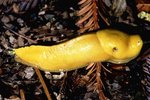
Of the more than 2,000 known species of shrimp, some live in saltwater, others in freshwater, but these crustaceans related to lobsters and crabs all have hard outer shells with soft bodies underneath. Unfortunately for them, those tender bodies are a dietary staple for a wide range of aquatic wildlife and birds. But when it comes to fighting the odds for survival stacked against them, some species of freshwater shrimp are tougher and more resourceful than you might suppose.
Invasion of the Killer Shrimp
It sounds like the title of a wacky creature feature but killer shrimp invasion is no joke in the United Kingdom. First reported there in 2010, this voracious predator only grows to a length of about an inch, but it feeds on shrimp native to the waters it invades, wreaking havoc with freshwater ecosystems. These aggressive crustaceans used to be confined to eastern European waters but began hitching rides up the Danube River on ships in the 1980s. Since their eggs can survive out of water, the cannibals were also transported overland on the hulls of towed recreational boats, then seeded into inland bodies of water. Adaptations that have allowed killer shrimps to become the apex predator of Europe's shrimp world include mighty mouthparts, ultra-sensitive antennae to detect the presence of prey and a fast ambush strategy.
Australia's Weird Shield Shrimp
Only in Down Under, where strange animals are the rule rather than the exception, can we find a freshwater shrimp that lives in the desert, breathes through its feet and looks like a snail. Shield shrimp, so named for the carapace on their backs that protects the head and front portion of their bodies, start out life as eggs blown around, sometimes for years, by arid desert winds. But as soon as rain comes, they hatch by the millions in temporary puddles and lakes, where they spend their entire brief lives. As branchiopods, their gills are on their feet, which allows them to keep breathing until moisture's last gasp. After the earth dries up, so do they, but eggs laid by the females survive, the life inside patiently awaiting the next rainfall.
See-Through Glass Shrimp
Also known as eastern grass shrimp and ghost shrimp, glass shrimp live in freshwater ponds, lakes, and streams east of the Allegheny Mountains from Florida to New Jersey, as well as parts of California, Louisiana, Texas and Oklahoma. Their transparent bodies make them difficult for predators to see but, just to be on the safe side, during daylight hours they lay low under dense beds of aquatic vegetation, becoming active only after dark. Adults reach lengths of about 2 inches.
Bloody Red Shrimp
This fast-spreading invasive species, native to the freshwater margins of three Eurasian seas, made its way from there to major European rivers and is presumed to have crossed the Atlantic to North America on ships. Named for cells in their bodies that turn red in response to light, bloody red shrimp were first reported in southeastern Lake Ontario, and from a channel connecting Muskegon Lake to Lake Michigan, in 2006. However, they could have been present much longer because they're so tiny that, at best of times, they're difficult to see, and when alarmed they swim away so fast that they're also difficult to monitor. During daylight hours, they hide near rock crevices, boulders, docks and other kinds of cover, but at night they rise in swarms to the surface.
Endangered California Freshwater Shrimp
Since 1988, California freshwater shrimp have been protected as an endangered species and are now the only native stream-dwelling shrimp species left in that state. According to the conservation organization Wild Equity Institute, they inhabit waters near the banks of just a few creeks in Napa, Sonoma and Marin counties. Despite their rarity, these shrimp, which grow to a length of about 2 inches, are well adapted to their watery world. Their almost transparent bodies make them a challenge for predators to spot, but if the little fellows do find themselves swallowed by one of the stream's co-occupants, they jab the pointy tops of their spines into the roof of the fish's mouth in an often successful bid to be spit back out.
References
- Dive Training: Small Critters With a Big Story to Tell: The Shrimps
- Arun and Rother Rivers Trust: Killer Shrimps in Britain: Hype or Horror?
- Queensland Museum: Shield Shrimp
- National Museum of Australia: What Is a Desert?
- U.S. Geological Survey: Nonindigenous Aquatic Species: Hemimysis Anomala (Bloody Red Shrimp)
- Wild Equity Institute: California Freshwater Shrimp
- University of Michigan Museum of Zoology: Animal Diversity Web: Palaemonetes Paludosus Riverine Grass Shrimp
- University of Michigan Museum of Zoology: Animal Diversity Web: Palaemonetes Paludosus Riverine Grass Shrimp
Photo Credits
-
Photos.com/Photos.com/Getty Images




